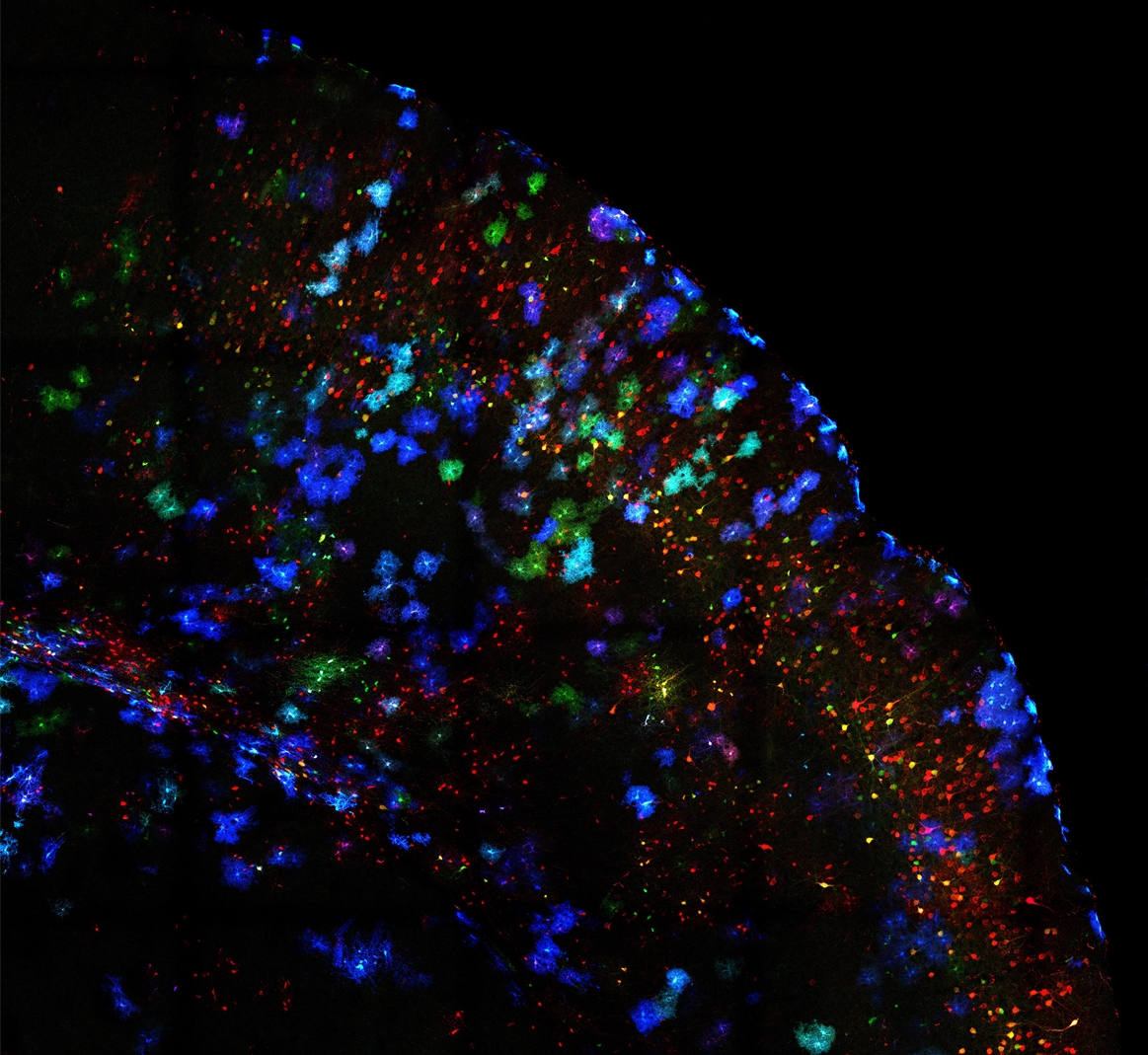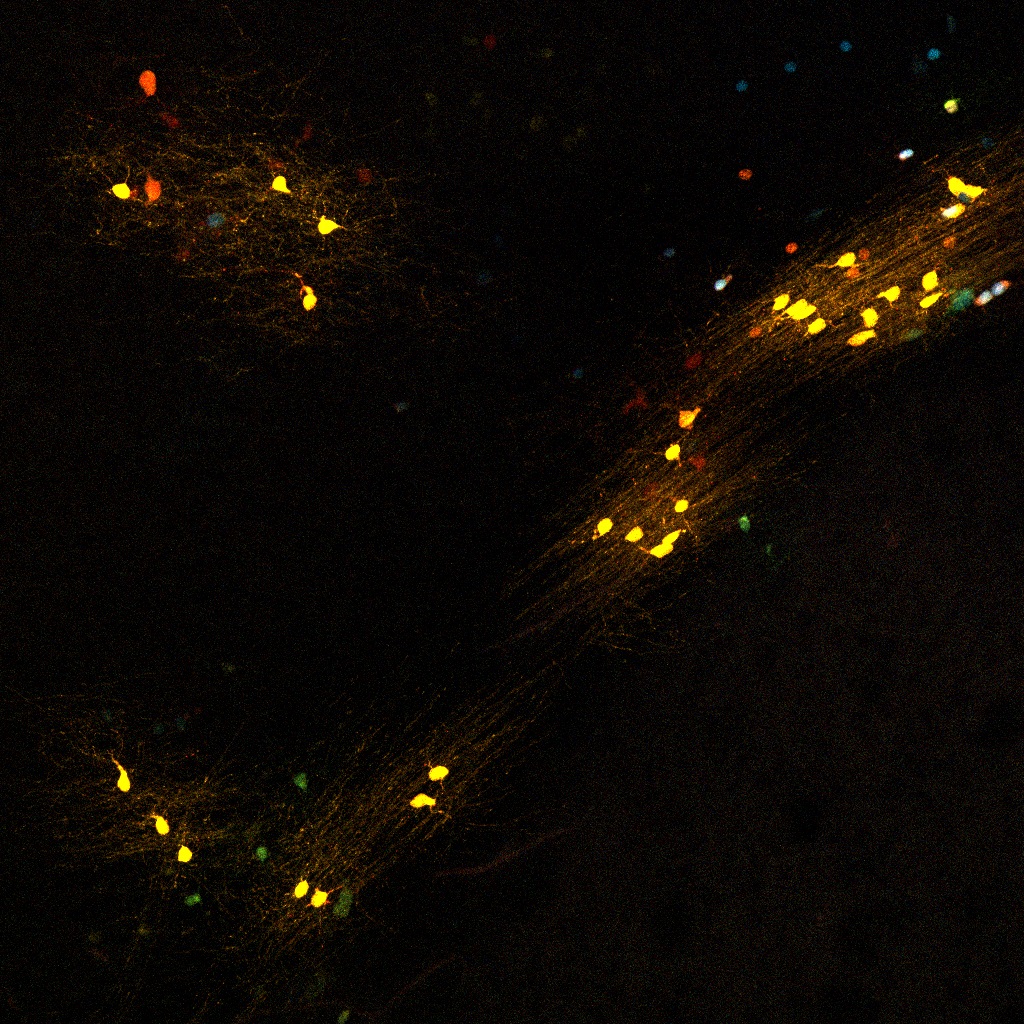|
Our general goal is to track the origin of individual progenitor cells in the mouse brain, with the purpose of identifying their final destinations as well as their lineage.
Research lines in the lab are:
- Clonal analysis of neural progenitors in the mouse olfactory system and brain cortex.
- Analysis of identity and functionality of cells belonging to a clone.
- Final dispersion pattern of different lineages.
- Heterogeneity of NG2 cells in adult mice.
- Proof of the existence of functional astroglial domains.
Contributions from our group:
- Clonal dispersion of NG2 cells, describing the formation of large-sized clones (up to 400 cells) in the adult mouse brain.
- Generation of a clonal analysis method for different glial populations (StarTrack), showing that development has a fundamental role in determining astrocytic heterogeneity.
- Characterization of astroglial populations related with OB interneuron precursor migration.
- Correlation between olfactory glomeruli formation and OB synapse generation in different steps of embryonic development.
- Steps of morphogenesis of OB projection cells in relation with glomeruli structure formation.
Experimental approaches
- Electroporation after injection of transposable vectors, in utero and in early postnatal mice (StarTrack).
- Experimental embryology through ultrasound-mediated echography.
- Confocal and time-lapse microscopy.
- Cell and organotypic cultures.
- Co-cultures of tissue explants in collagen matrices.
- Genetic probe synthesis, in situ hybridisation, and vector constructions.
- Gene over-expression/repression through retro- and lenti-viral technology.
- Inmunohistochemistry.
- Classical histology methods: the Golgi method.
|




|